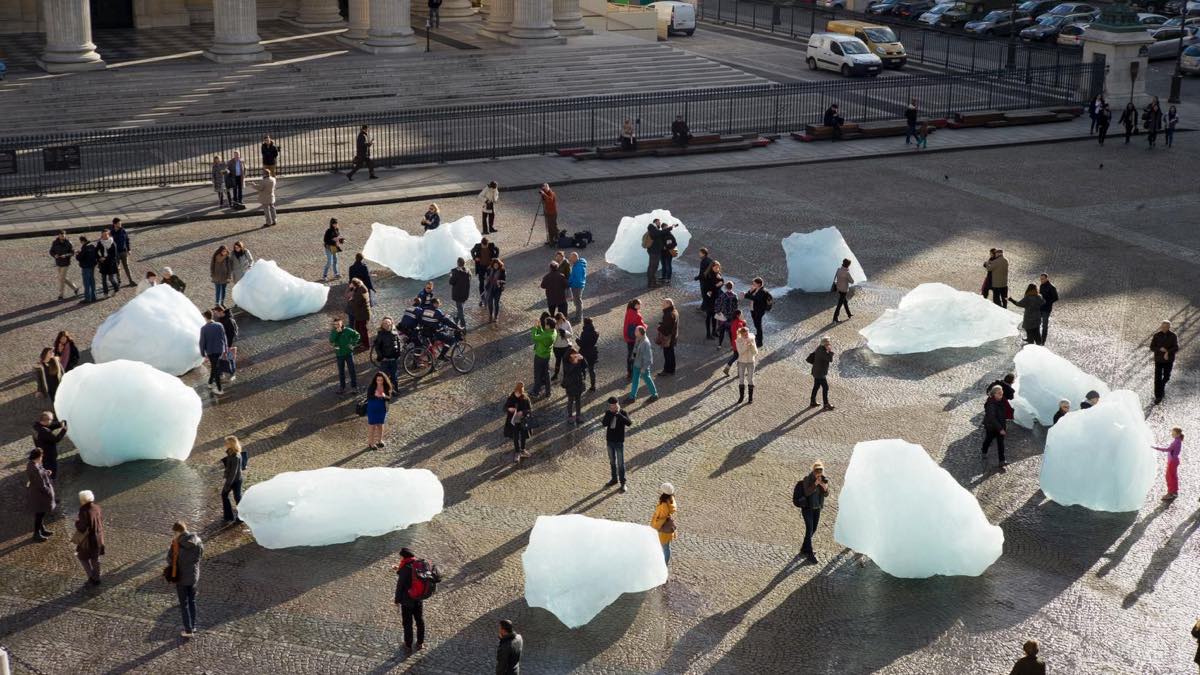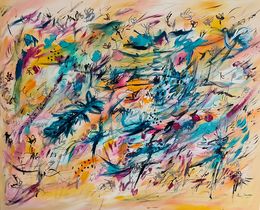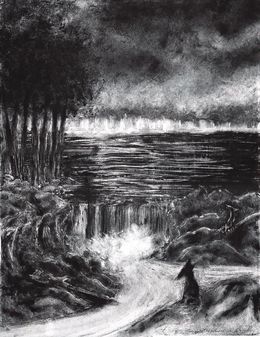
Radical Artworks on Climate Change
Climate change art can be defined as art inspired by the climate emergency and global warming. It is typically created in order to perpetuate a radical message in support of the earth’s protection. From the level of the individual artist, to mass community activism, the climate change artistic movement has rapidly grown in strength over the last twenty years. Modern climate change artists express their socio-political concerns through various artistic media such as painting, photography, music and film. Here, Artsper delves into a curation of radical artworks on climate change exploring subjects such as social responsibility, planet preservation and the innate humility of mankind.
What does art have to do with climate change?
In an article dating back to 2005 entitled, “What the Warming World Needs Now Is Art, Sweet Art,” the writer Bill McKibben raised a very insightful question about climate change. He said that although all of us know what climate change is from a purely factual and scientific standing, we didn’t really know what it actually means. “Where are the books? The plays? The goddamn operas?” he asked. And thus the point was made that an intellectual understanding of the scientific facts is arguably not enough and that, there’s needs to be more done. McKibben argued that if we want to affect meaningful change, we need to engage the other side of our brain that deals with creativity. We needed to approach the problem with our imagination. And the people best suited to help us do that, he believed, were the artists.
How the artists took up arms
One of the goals of climate change art is to raise awareness of the climate crisis. Another is to politically engage viewers through a more subtle means of information dissemination. Art used to spread a message, transcends the innate human tendency to privilege personal experience over data. Art can help those in society disengaged from data-driven representations to become engaged. This form of art can be likened in this way to war time propaganda posters. Certainly the Extinction Rebellion, whose stamp marks the streets of many global cities today, has seen the value of art in the spread of its militant campaign. In this case, art makes the catastrophic figures we are all aware of from our newsfeeds come alive.
The Ice Watch by Olafur Eliasson

Climate activist and artist Olafur Eliasson presented his most symbolic piece, Ice Watch in Paris, December 2015. The sculpture featured 80 tons of ice from a fjord near Nuuk, Greenland. It was presented with the aim of inspiring collective action against climate change. Eliasson chose a critical moment to display his work. This was during the meeting of world leaders at Le Bourget in 2015. The artwork thus drew a lot of attention to the deal these leaders were deciding upon: the future stability of the climate for future generations. The ice that melted on the square was intended to give a glimpse into the future of our planet. Many viewed the Ice Watch as a remarkable example of how art in public space can draw attention to grand challenges and encourage collective action.
The Tempestry Project

The word “tempestry” is a portmanteau phrase combining “temperature” and “tapestry.” It is the name of a collaborative fiber arts project begun in 2017 in Anacortes, Washington, US. The Tempestry Project presents global warming data in visual form through knitted or crocheted artwork. The project is part of a larger data art movement. It seeks to exploit the human tendency to value personal experience over data by creating accessible experiential representations of the data. Tempestries are made by knitting or crocheting rows in specified colors. These rows then represent respective high temperatures each day for a year. Multiple works are typically displayed together to show change over time. The project, which began in the US, and has since spread throughout the country and around the world.
Can you see the future?
Following in the wake of land art and other eco-conscious art forms conveying the fragility of nature, climate change art is certainly increasing in its visibility. Today, interesting artistic works about climate change are popping up in all corners over the world. So what exactly does the future hold for climate change art and more importantly for the planet? For now, it is too hard to tell. But with every environmentally-charged gesture the war on the climate emergency is waged.
Since man has traveled through deserts and mountains in search of isolated spaces for his creative inspiration, the artist has sought to describe the ever-changing natural landscape. Darwin’s voyage to the Galapagos islands is a prime example of this. However since then, it is fair to say that the planet has been served some pretty severe blows. Thus, the role of climate change art remains ever pertinent in its abilty to raise this critical topic in our minds. In this way, art acts a revealer of our surroundings. After all, it is sometimes through the lens of a canvas that the truth of a situation is able to be revealed. This is the mission of these ecologically concerned artists that have been mentioned in this essay and we should all stand in their support!

About Artsper
Founded in 2013, Artsper is an online marketplace for contemporary art. Partnering with 1,800 professional art galleries around the world, it makes discovering and acquiring art accessible to all.
Learn more















